Can you imagine sticking needles all over your body, using jars to create bruises on your back, or scraping your skin with a ceramic spoon to cure sickness? These are all common practices in traditional Chinese medicine that are believed to help cure illness. Traditional Chinese medicine dates back to over 2,000 years ago and encompasses various therapy techniques including herbal remedies, acupuncture, and massage.
Traditional Chinese medicine revolves around the notion that qi, the body’s vital energy, flows through meridians, which are paths that connect major organs and bodily functions. Qi is affected by yin and yang, a Chinese concept also mentioned in our post about inflammation and colds in Chinese medicine. Yin and yang, loosely translated as “shady” and “sunny” respectively, are complementary forces that interact in all aspects of life. Qi manifests itself through yin and yang; in order to have optimal health, the amount of yin and yang in the body must be in harmony.
Another principle traditional Chinese medicine relies upon is the 五行 (wǔ xíng), or “five elements” theory. This theory breaks the universe down into five elements: metal (金 jīn), wood (木 mù), water (水 shuǐ),fire (火 huǒ), and earth (土 tǔ). These aspects of the five elements theory are used in applying therapy techniques, as each element of wu xing corresponds to a pair of organs in the body.
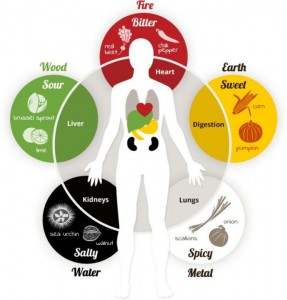
There is some controversy surrounding traditional Chinese medicine, due to the lack of rigorous scientific evidence proving whether or not the methods work. Nevertheless, traditional Chinese medicine is quite prevalent in Chinese-speaking countries today, and has also become a well-known form of alternative medicine all over the world due to its historical and cultural roots. Therapy techniques focus on regulating bodily functions through easing tension and improving circulation.
Here is an overview of a few different types of therapy techniques used in Chinese medicine:
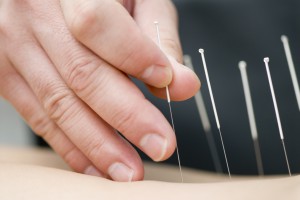
Acupuncture involves inserting thin needles into the body at specific points for a period of time. The needles are placed on acupuncture points, which relate to qi and meridians that connect to certain body parts and functions. When qi becomes blocked or unbalanced, illness arises. By placing the needles at points associated with the origin of illness, the flow of qi can be restored. Acupuncture is commonly used for pain relief.
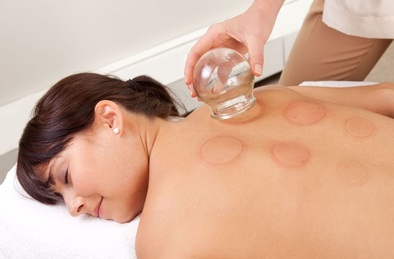
Bá guàn is a technique that uses small cups, often made of glass, to create suction on the skin. Suction can be created in a variety of ways. One method involves lighting up an alcohol-soaked cotton ball and placing it inside the cup. The cotton ball is then removed, and the heated cup is quickly placed on the skin. As the air inside the cup cools down, the skin is drawn up by the pressure. This creates light swelling and bruising on the skin when the cups are removed. While the bruises are prominent, they are not painful and the treatment is generally a relaxing experience. Like the needles in acupuncture, the cups are strategically placed at certain points to balance qi and stimulate blood flow. Cupping is often used to treat respiratory problems.
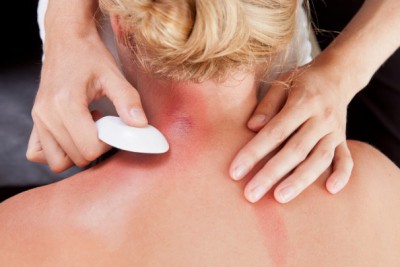
Did you know? In the 1970’s, several Chinese immigrant parents were wrongly accused of child abuse, due to red marks on their children’s skin caused by gua sha! This practice involves repeatedly scraping lubricated skin with a tool, which could be a ceramic spoon, coin, animal bone, or shaped piece of rock. The tool’s smooth edge is firmly stroked across the skin, starting in the spinal area and moving along meridians to produce light bruises. Like other techniques in traditional Chinese medicine, gua sha is believed to release toxins from the body and improve blood circulation. While the process can be painful, its purpose is to relieve blood stagnation and tension and relax muscles through increased blood flow. Gua sha is used as a remedy for problems including chronic pain or fever.
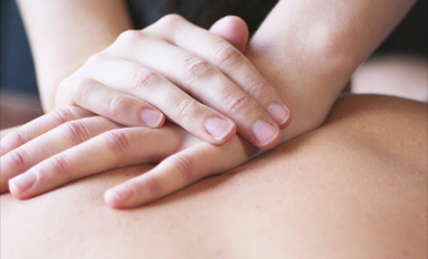
Tui na, which literally translates to “push and grasp”, is a form of therapeutic massage that focuses on treating specific problems rather than simply providing relaxation. Various hand techniques are used, including kneading, rolling, pressing, and rubbing. Tui na often involves acupressure, which is a technique that uses fingers, hands, or the elbow to apply pressure to a specific point on the body. Similar to the other therapy methods, tui na aims to regulate the flow of qi in the body by targeting points and meridians. These techniques are often used to treat musculoskeletal conditions.
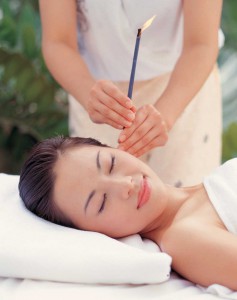
Ear candling is an alternative medicine practice that some believe originated from ancient China. Unlike the other therapy techniques above, medical research has shown that this process may be both ineffective and dangerous! Ear candling involves placing one end of a hollow candle into the ear canal and lighting the other end to create negative pressure. The goal of this technique is to clean the ear by drawing ear wax and debris out of the canal. The rumor that ear candling is a good detoxification method has since been debunked. Studies have shown that not only is it ineffective at getting ear wax out, but it can also be dangerous as the hot wax can drip into the ear and burn. Unfortunately, this may not be the best method to treat allergies, headaches, and colds, which are all symptoms that ear candling was believed to be a cure for.
In light of this evidence, many practitioners no longer perform this therapy technique.
What do you think? Would you try any of these alternative therapies (aside from ear candling?) If you do decide to give these a try, we recommend that you find a reputable practitioner!
If you've tried any of these before, let us know! We'd love to hear about your experiences.
ABOUT TUTORABC Chinese
Founded in 2004, TutorABC Global, the parent company of TutorABC Chinese, created the first commercially available synchronous learning portal in the world. TutorABC Global offers world class Chinese tutors at TutorABC Chinese. For English learning, it offers TutorABC, and tutorabcJr.
LIKE THIS POST? JOIN Us TO LEARN MORE!
